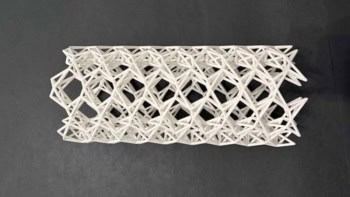
If you are having trouble with your heart or struggling to communicate because of a debilitating disease, a new hi-tech tattoo could soon offer help. That’s the claim of an international team of researchers that has created tattoo-like devices that can monitor heart beats, brain waves and muscle contractions.
The devices stick to skin without adhesives and move naturally with the body. The team has also integrated electrical and temperature sensors, transmitting antennas, receivers, power sources, lights and the gamut of basic circuit elements into the tattoos.
The conventional way of monitoring electrical signals given off by the heart and other organs involves electrodes smeared with conductive gel and held on with tape. However, such devices restrict the patient’s movement and normal readings are difficult to attain because the wearer is likely to be affected by presence of an electrode.
“If you want something that can be worn without irritation, with robust adhesion that doesn’t create any discomfort, you want it to match the mechanical properties and deformability of the skin,” explains John Rogers of the University of Illinois, Urbana-Champaign, who leads the research. With this goal in mind, the team came up with a circuit design that allows a semiconductor device to stretch and contract with human skin.
Semiconductor squiggles
While commercial semiconductors such as silicon and gallium arsenide make effective circuits, they are also are stiff and brittle. To make them flex and stretch, the team shaped them into extremely thin squiggles. “We take a silicon wafer that is half a millimetre thick and slice very, very thin membranes,” Rogers tells physicsworld.com. This reduces the silicon to a thickness of 50 or 100 nm, which is enough to allow it to flex. To allow the silicon to stretch, the researchers then etched the material into serpentine shapes.
“The metal interconnect wiring, the contact pads, the resistors – pretty much everything, I think, can be fashioned into these shapes,” says Rogers. The squiggly components are assembled onto a sheet of polyamide and then the circuit is transferred to a breathable elastic sheet of modified polyester that is just 30 µm thick. The completed device attaches to skin much like a temporary tattoo, clinging by Van der Waals interactions between the polyester sheet and skin, without the need for adhesive.
Karen Cheung, a specialist in bio-micro-electromechanical systems at the University of British Columbia who was not involved in the work, says the system “represents a huge improvement over current non-invasive electrodes”.
Controlling a computer game
University of Illinois researchers Dae-Hyeong Kim, Nanshu Lu and Rui Ma placed tattoos on their foreheads, chests, legs and throats to test the abilities of these sensors in reading brain waves, heart beats, muscle contractions from walking and activity in the throat when speaking. In the speech trial, the sensor could differentiate between the spoken words “up”, “down”, “left” and “right”, allowing Ma to control a strategy computer game called Sokoban.
“One can imagine using this technology to make huge improvements in assistive technology for patients of spinal-cord injury or neurodegenerative disease, such as amyotrophic lateral sclerosis,” says Cheung. She believes that these electronic tattoos could be worn comfortably for long periods of time, helping patients to “regain independence and quality of life”.
While wires were used to power and receive signals from the tattoos, the team also integrated power sources and transmitter antennas on other systems. However, what Rogers calls the “ultimate” device, combining sensors with a power source and a wireless data system, has yet to be made.
Tiny photovoltaic cells and induction coils, which convert an external alternating electric field into a current, were both tested as power sources. Rogers says that the induction coils are best for temporary uses, while photovoltaics need a storage device if they are to provide a reliable, long-term power supply. But batteries would increase the weight of the device, so the researchers have also suggested scavenging energy from the motion of the wearer.
The tattoos are described in Science 333 838.
Watch an interview with John Rogers here. It was first broadcast in January 2011.



